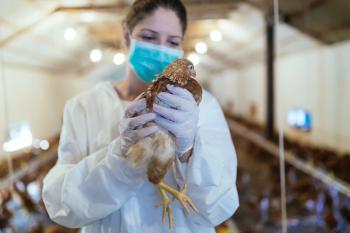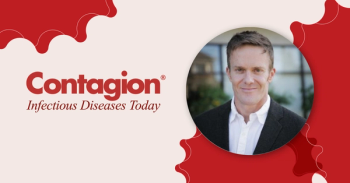
Nuts and Bolts of Twitter for Antimicrobial Stewardship
John Nosta, BA: I guess part of the trick is becoming comfortable with Twitter. As you and I both know, it doesn’t have to be a clinician. It could be a CEO, or it could be anyone who’s not adept at social media. It almost seems like an insurmountable obstacle. Do you have rituals that you go through with Twitter, other than tweeting? Do you check it every day? How often are you on Twitter?
Debra A. Goff, PharmD, FCCP: I do. I usually check it in the morning, because I have a large global following. A lot of my colleagues in South Africa are coming to the end of their day when I’m starting my day. It’s really neat to make that connection in the morning, to see what they are tweeting about. I just enjoy that. I kind of get a pulse of what’s going on. If there is breaking news or some new outbreak somewhere, I can get in to work and look up the article. Then I can tweet that out to my entire network.
I make a real effort to try to connect with people on Twitter. I have a very detailed strategy, in terms of how I tweet. To me, it is the voice for antibiotic stewardship. I’m not just on it for fun and games. I’m not just trying to be popular, which is what I think is the negative perception of Twitter: that it’s for the movie stars and it’s a way for them to have 18 million followers. That’s great, but that’s not my purpose.
John Nosta, BA: We talked earlier about Twitter as a search engine, and I want to come to that. But I want to start with a tweet, OK?
Debra A. Goff, PharmD, FCCP: Sure.
John Nosta, BA: I’ll give you my vision of it and then we can compare a little bit. I try to write the headline. I actually call it a headline because it’s got to be sticky. It’s got to be resonant.
Debra A. Goff, PharmD, FCCP: Engaging.
John Nosta, BA: Yes. It’s got to be engaging, otherwise it goes by so quickly. I’ll sometimes use a really simple trick like, “Read this!” People may feel that this is a bit vulgar or arrogant. So I’ll write my headline, then I’ll almost always provide some kind of link, unless it’s an editorial like, “Don’t forget to vote.” But I really try to find that link. Often, I’m tweeting a link. But I’ll look at the headline, and online, if you click the tweet tab, it will populate your Twitter feed so that the headline is already there. But I don’t use that headline. I look at it and I change it. I make it shorter. So I try to write the headline. That’s first. I always read the link, because some of those things are bad. Some of the articles are wrong. I check the date of the paper because I’ll sometimes see something that’s really cool like, “Wow, a cancer cure.”
Debra A. Goff, PharmD, FCCP: But it’s old.
John Nosta, BA: Right, and it’s from a really weird journal. Or maybe it’s not even in a journal. So, I always check the link.
Debra A. Goff, PharmD, FCCP: Smart.
John Nosta, BA: And then the 2 things that are important, and you’ve said this time and time again, are the hashtag and who I tag on that. People often invent hashtags because they want to make it cool, but that’s meaningless. The hashtag connects you to an audience or a topic.
Debra A. Goff, PharmD, FCCP: Right.
John Nosta, BA: I want you to talk about that. In infectious disease, if I typed in #antimicrobialstewardship, well, I’m using up all of my letters.
Debra A. Goff, PharmD, FCCP: Yes, that’s too long.
John Nosta, BA: And I don’t think that people really use that. And then, I tag people who I think might be interested in this information or might give the tweet a boost. It’s not always exactly germane to them.
Debra A. Goff, PharmD, FCCP: Right.
John Nosta, BA: Let’s go through those. When you’re doing a tweet, does that make sense to you?
Debra A. Goff, PharmD, FCCP: Absolutely. If you want your tweet to be picked up by the maximum amount of people who may be interested in the topic, you include the hashtag in your tweet. Almost all of my tweets have #antibiotics.
John Nosta, BA: See, isn’t that interesting? So, others might not use that because it’s very broad.
Debra A. Goff, PharmD, FCCP: But remember, the problem we have in antibiotic stewardship is that we don’t have the broad audience engaged. We have infectious disease experts engaged. We’re not reaching that broad audience.
John Nosta, BA: Almost every one of my tweets has either #healthtech or #digitalhealth, because I want to flag this to my audience and say, “Hey guys, read this.” Sometimes I’ll do a tweet on Elon Musk’s driverless car or whatever it is. I’ll add #digitalhealth because I want to flag this to my audience. Perhaps it shares an intellectual or emotional border that makes my feed a bit more interesting. If you look at a traditional pharmaceutical feed, it’s like a generic ad or something. It has no human connection. Social media, to me, is 20% media and 80% social.
Debra A. Goff, PharmD, FCCP: Right, that’s why it’s called social media.
John Nosta, BA: So sometimes I’ll say, “Hey Debra, thanks for that tweet.” Again, that doesn’t contribute to the lofty aspects of science.
Debra A. Goff, PharmD, FCCP: But it makes that personal connection.
John Nosta, BA: Right. When a big rock star retweets you, it feels great. So when you craft that tweet, what are the types of things that you stick in there?
Debra A. Goff, PharmD, FCCP: I may find an article in an infectious disease journal like The Lancet Infectious Diseases, which I know surgeons don’t read. I don’t read surgical journals. They’re not reading my journals. But maybe this topic is relevant to surgeons. Maybe it reviews surgical site infections and outcomes with a new antibiotic, or something like that. I know they’re never going to see this article.
Newsletter
Stay ahead of emerging infectious disease threats with expert insights and breaking research. Subscribe now to get updates delivered straight to your inbox.

























































































































































































































































































